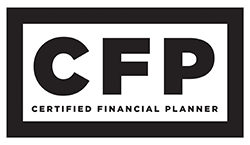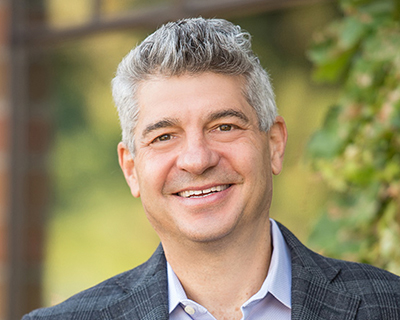The world is currently investing some $2.8 trillion per year in the green energy transition, fueling growth and innovation in renewable energies like solar and wind, electric vehicles, nuclear power, smart, resilient energy grids, storage and batteries, low-emissions fuels, efficiency improvements and heat pumps.[1] That investment is expected to grow dramatically in the years to come, accelerating a change in nearly every aspect of the global economy. If you’re eager to align your portfolio with this massive shift, you are not alone.
There are a number of great reasons for considering green investments. For instance, you may be concerned about the alarming trends in the world environment—such as increasing global temperatures, rising sea levels, shrinking glaciers and an ever increasing concentration of carbon dioxide in our atmosphere. The carbon dioxide concentration has increased 25% since 1958.[2] Green investing is a way to be part of the solution: a new, cleaner, less destructive economy.
Or you may be attracted by the growth potential of the green economy, which is expected to increase world GDP by more than $10 trillion by 2050 or 5.2% of global GDP.[3] You can benefit from that growth, too, through a balanced portfolio of green investments.
Alternatively, you may be looking for additional risk protection in your portfolio, so you are investing in companies that are not likely to be sued, boycotted, or suffer reputational damage from causing environmental damage. Green investing screens out companies that are at high risk because of their weak environmental practices.
Whatever your reasons for exploring green investments, it’s a great time to get started. The U.S. has made a multi-billion commitment to green energy through the Inflation Reduction Act—and other economies around the world are also kick-starting the conversion process with significant investments. Today there are more quality green energy investment options for nearly every part of your investment portfolio—from stocks, mutual funds and ETFs to green bonds to private equity and debt. Let’s look closer at what green investing is and how it can work for you.
Table of Contents
What is Green Investing?
In its simplest form, green investing means investing in companies or organizations that have a favorable impact on the environment. This also includes companies and organizations that meet certain standards for environmental performance, even though their main business is something else. For instance, companies in any industry can manage their greenhouse gas emissions, reduce packaging waste, or conserve natural resources like water. Or it may be because they are actively pursuing a business model that enhances the environment—like making electric cars or installing solar panels.
There are three main approaches to green investing:
- ESG integration and screening evaluates investments according to key environmental, social and governance metrics, then eliminates or reduces the holdings of the lowest scoring companies. In this kind of portfolio, you’ll end up with many of the stocks in a broad index like the S&P 500, minus the worst polluters and carbon emitters.
- Thematic investing focuses on companies that address a specific green economy challenge, like clean energy, sustainable forestry and agriculture, waste, and water management. Thematic portfolios don’t just eliminate the worst climate offenders; they actively seek out and support firms that are working towards positive change. These portfolios are highly targeted, so you can select the green investments that resonate best with your own concerns and priorities.
- Impact investing seeks out opportunities in assets that can potentially generate an attractive return as well as positive social or environmental impact. These investments are often private—that is, they don’t trade on public stock or bond exchanges—and can use ESG overlays. Impact investments are typically thematic. They can address various aspects of climate change, including but not limited to:
-
- renewable power innovators
- companies working to increase the climate resilience of our cities and infrastructure
- firms developing lab-grown and plant-based foods
- companies inventing climate friendly alternatives to construction materials like steel and concrete[LS1] .
-
Constructing a Green Portfolio
Some investors allocate only a portion of their portfolio to green investment, choosing, for instance, a single fund or impact investment. However, for many people, that’s not enough, they want to align their entire portfolio, or as much of it as possible, with a green investing approach. Here’s how that can work:
Asset Allocation
Green portfolio construction starts like any other investment process—by considering the needs, objectives, and preferences of the investor. You’ll have to identify your short- and long-term goals, how much you’ve accumulated to date, how much you’ll need to reach your objectives and your attitudes towards risk and short-term losses.
From there, you will have to develop a target asset allocation, essentially a road map that shows how much you’ll need in each asset class to have the best chance of meeting your short- and long-term needs. So far, it’s not much different from traditional investing.
Investment Selection
The process becomes “green” when you begin selecting investments to fill the various asset classes. Environmental considerations become another factor in your decision-making process, alongside financial considerations such as expected risk and return, manager track record and diversification[LS2] . You’ll want to focus on fund families that show commitment and resources to the green investing space, have strong reputations, and well-designed processes for identifying value in it.
Stocks
In any portfolio, stocks provide the opportunity for growth and appreciation, in exchange for a significant amount of short-term fluctuation in value. Your age, time to reach your goals and overall attitude towards risk determines how much of your portfolio goes into this bucket.
You can make this portion of your portfolio climate-friendly in a variety of ways. ESG-screened stock funds provide broad market exposure while eliminating companies that score poorly on environmental metrics. Thematic funds can enable you to invest in companies making a positive difference on various environmental challenges—such as green energy production, a more efficient grid, recycling and carbon capture. Impact investments seek a dual bottom line of both positive financial performance and a measurable effect on the environment.
You can make these investments through a variety of vehicles including individual securities, mutual funds and ETFs.
Bonds
Most investors allocate a portion of their portfolio to bonds, both to generate income and to provide some stability. You can make this part of your portfolio environmentally friendly by investing in green bonds.
Green bonds work like regular bonds in many ways. You invest a certain amount and get it back when the bond matures. Along the way, you receive regular interest payments. But with green bonds, the money you invest goes to finance projects that have a positive environmental impact, such as renewable energy and green buildings.
Green debt has grown rapidly over the last few years. In 2023, issuers raised $492.30 billion in green financing, up from $446.18 billion the previous year.[4] Experts expect even more robust issuance in the next several years, especially if interest rates decline.
Individuals can invest directly in a diversified ladder of green bonds, or they can participate through green bond ETFs and mutual funds. In addition to income and environmental impact, green bonds often offer tax benefits, since they are frequently structured as municipal bonds (to fund environmental projects) and consequently are exempt from federal income taxes.
In addition to green bonds, there is a small but growing market in blue bonds which finance water conservation projects. To date, issuers have raised just $5 billion in blue bonds worldwide and there are fund or ETF options, but the market is developing and may soon be accessible to individuals.[5]
International Investments
Diversifying your portfolio across markets and economies can reduce your exposure to shifts in any single part of the world and enable you to take advantage of a broader set of opportunities. Because the green economy transition is a global phenomenon, there are plenty of opportunities to invest across national boundaries.
Europe has also embarked on an enormous project to replace fossil fuels with clean energy, both because of climate concerns and to reduce their dependence on Russia. In 2023 alone, the EU cut its reliance on fossil fuels for electricity by 19%. For the first time ever, fossil fuels generated less than a third of the electricity used by the EU.[6] Europe, which like the rest of the world, has long depended on China for clean technology products, is currently launching an initiative to make solar and wind power, fuel cells and other green energy tools locally. The European Union hopes to produce at least 40% of its green technology equipment internally by 2024[LS3] [JK4] [JK5] .[7] This, too, is likely to foster dynamic new companies and investment opportunities outside the U.S.
Even China has made a massive commitment to sustainable energy and now derives 40% of its total economic growth from clean energy, according to the Centre for Research on Energy and Clean Air.[8] They have some of the world’s most polluted cities and realize that they need to shift to clean energy. China is a leading manufacturer of solar panels, electric vehicles and batteries, among other clean energy products, and a globally diversified green portfolio can benefit Chinese companies’ rapid growth.
Private Assets and Alternatives
In addition to publicly traded assets like stocks and bonds, many high net worth investors incorporate private market assets like private equity, venture capital and private debt into their investment strategies. These private market assets increase potential returns and enhance diversification.
It’s important to understand that these assets are less liquid than public market securities and you may have to wait months or years to withdraw your money. In exchange, you may be able to earn a much higher return.
One study by the buyout firm KKR found that private equity funds outperformed the stock market in nearly every market environment from 1981 to 2021, earning about 4.3% more than public equities.[9] Private credit also provided a return advantage, according to one study generating 10% annualized total return versus 5% for public loans over a ten-year period.[10]
The market for green private equity and debt has grown and matured considerably over the last several years, offering more options than ever for investors seeking an environmentally friendly approach to private investing. With all these choices available, you can usually find and select managers and partnerships that fit your needs, although private investments often need to be purchased through a financial advisor.
Separately Managed Accounts
Investors who seek a customized approach to portfolio construction and tax management are often drawn to separately managed accounts. These accounts give you the benefits of direct security ownership. For instance, you can decide which securities within the portfolio to sell to minimize capital gains taxes—along with the convenience and added value of professional portfolio management. Now some forward-thinking investment providers are adapting this flexible structure to sustainable investing, providing an additional tool for green portfolio construction.
Ethic, a firm that we partner with, for instance, offers investors access to a Values Mapping Exercise, an interactive tool that allows people to express their values across 19 different sustainability criteria, then incorporates this information into the portfolio selection process. The customized SMA structure makes it possible to construct portfolios that reflect individual client priorities. It can also tailor holdings to complement other parts of the portfolio. For example, if you work at a technology company and receive stock options, you might want to reduce technology holdings in your retirement or personal investment accounts to manage your exposure to single-industry risk.
Other well-recognized sustainable investment managers that we work with, including Calvert and Black Rock, also offer separate account management vehicles for green investment to high net worth investors.
The Transition to Green
Once you’ve decided to pursue a green investment strategy and selected the funds, ETFs, and other vehicles that will fit it, you will need to gradually shift your assets into the new strategy.
The process of shifting your assets into the new strategy is important because every time you sell an existing taxable holding to buy something else, you may realize a capital gain or loss. Managing tax impact can significantly increase your after-tax returns and minimize the cost of your transition.
If the bulk of your assets are in tax-deferred retirement savings accounts, the process is relatively simple. You pay no taxes on gains when you reinvest funds within your IRA or 401(k) or other tax-deferred accounts.
If you have substantial taxable investment holdings—like a brokerage account or personal investment accounts—it’s a bit more complicated. You’ll need to evaluate the tax impact of sales, matching gains in one part of your portfolio with losses in another wherever possible. This process may take some time as you wait for the right market conditions to make changes in your investment allocation.
How an Advisor can Help
Even if you’re an experienced, do-it-yourself investor, building a green portfolio may be more work than you want to take on. It requires expertise and market access, especially if you’re considering green investments that don’t trade on the public markets. Working with a professional advisor can be really valuable in the process. Here are some of the things that an experienced financial partner can do for you.
- Develop a personalized investment and asset allocation strategy that reflects your unique needs and circumstances.
- Research and evaluate investment asset managers within the sustainable investment community and bring you opportunities that may not be available otherwise.
- Widen the scope to include private equity, private debt and other impact investing opportunities.
- Manage your transition to a green portfolio to minimize tax liabilities.
- Monitor performance, risk and climate impact in your portfolio and make adjustments as necessary.
- Keep you informed of key developments and emerging opportunities in the sustainable investment space.
An Experienced Partner can Streamline the Process
Creating a green portfolio can be incredibly rewarding, both personally and financially. You’ll learn a lot about the environment and your potential impact on it just by choosing and monitoring your investments—and you can feel the satisfaction of contributing, in a small way, to a better, cleaner, more livable world.
Though there are substantial benefits, there’s no denying that the process is complicated. An experienced financial advisor with expertise in green investing can help you devise a strategy that fits your needs, sort through the many investment products that are available to you and keep an eye on things as markets and opportunities shift.
Learn more about our services, or, if you’re ready to go green with your investments, but don’t want to do it alone, schedule a consultation with us. We’ve got nearly twenty-five years of experience working with people to help them express their most deeply held values through investments.
[1] World Energy Investment, IEA, May 2023. https://www.iea.org/news/clean-energy-investment-is-extending-its-lead-over-fossil-fuels-boosted-by-energy-security-strengths
[2] “Climate Change Impacts,” NOAA, January 2024. https://www.noaa.gov/education/resource-collections/climate/climate-change-impacts#:~:text=Global%20temperatures%20rose%20about%201.8,than%2060%20feet%20since%201980.
[3] “Climate risks are severe, but a new ‘green economy’ offers a $10.3tr opportunity,” Oxford Economics, January 18, 2023. https://www.oxfordeconomics.com/resource/green-economy-offers-10tr-opportunity/#:~:text=Three%20pillars%20of%20opportunity&text=The%20report%20estimates%20that%20the,global%20GDP%20in%20that%20year.
[4] “Global green bond sales to get boost in 2024 as interest rates may fall,” S&P Global Feb 4, 2024. https://www.spglobal.com/marketintelligence/en/news-insights/latest-news-headlines/global-green-bond-sales-to-get-boost-in-2024-as-interest-rates-may-fall-80251156
[5] “Blue is the next green: Bonds financing water conservation projects are approaching a ‘tipping point’” Business Insider, February 18, 2024. https://markets.businessinsider.com/news/bonds/bond-market-blue-bonds-water-conservation-funding-debt-environment-2024-2
[6] “2023: A milestone year for renewable energy in Europe – Unveiling Ember’s Electricity Review,” Solar Power Europe, February 8, 2024. https://www.solarpowereurope.org/news/2023-a-milestone-year-for-renewable-energy-in-europe-unveiling-ember-s-electricity-review
[7]“EU agrees path to compete in clean tech production,” Reuters, February 6, 2024. https://www.reuters.com/sustainability/climate-energy/eu-aims-agree-key-path-towards-green-industry-ambitions-2024-02-06/
[8] “China’s Green Economy Drove 40% of GDP Growth in 2023, CREA Says,” Bloomberg, January 24, 2024. https://www.bloomberg.com/news/articles/2024-01-25/china-s-green-economy-drove-40-of-gdp-growth-in-2023-crea-says?embedded-checkout=true
[9] “PE Has Outperformed Stocks for Decades — And Especially During High Inflation,” Institutional Investor, March 1, 2023. https://www.institutionalinvestor.com/article/2bstq9vxi7ne4vkw3zz7k/portfolio/pe-has-outperformed-stocks-for-decades-and-especially-during-high-inflation
[10] “Understanding Private Credit,” Goldman Sachs, October 20, 2022. https://www.gsam.com/content/gsam/us/en/advisors/market-insights/gsam-insights/2022/understanding-private-credit.html
[LS1]Impact investing really is about Private Investing and uses ESG overlays and is by definition thematic. ESG and Thematic investing can be both in public or private markets.
As a serial entrepreneur and world traveler, Lee Strongwater, president of Colorado Capital Management, brings a global perspective to investments and life planning.
Editor’s Note: This blog post is for informational purposes only and does not constitute financial, legal, or tax advice. Readers are encouraged to consult with a qualified professional regarding their individual circumstances. Please refer to our firm’s website for full disclosures and important information: CCM Website Disclaimer












